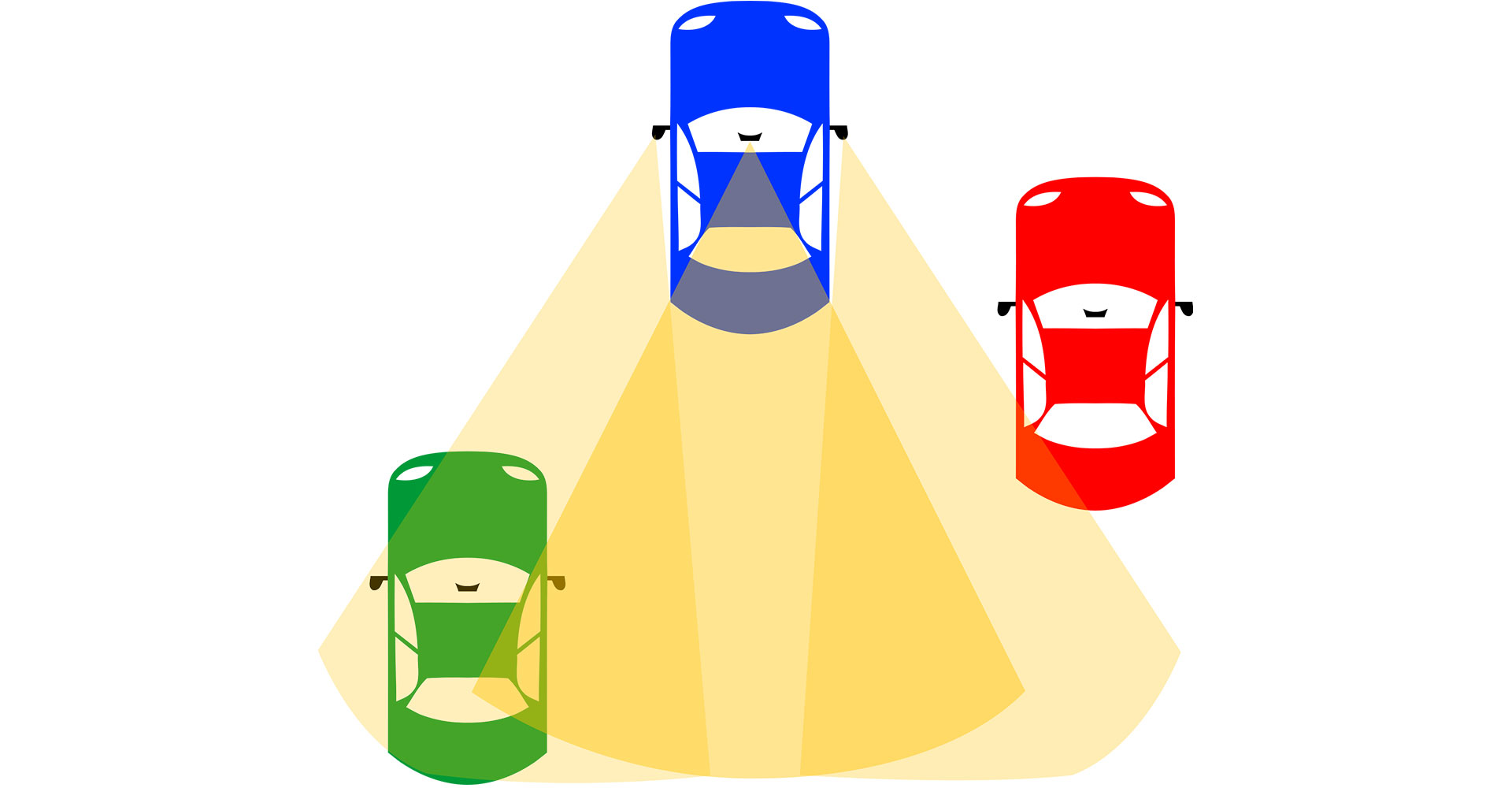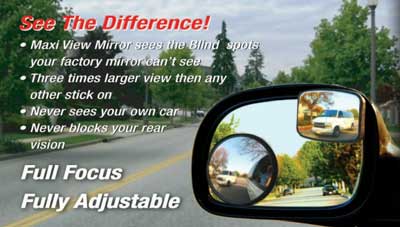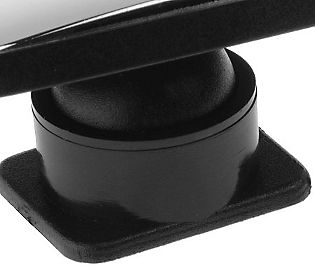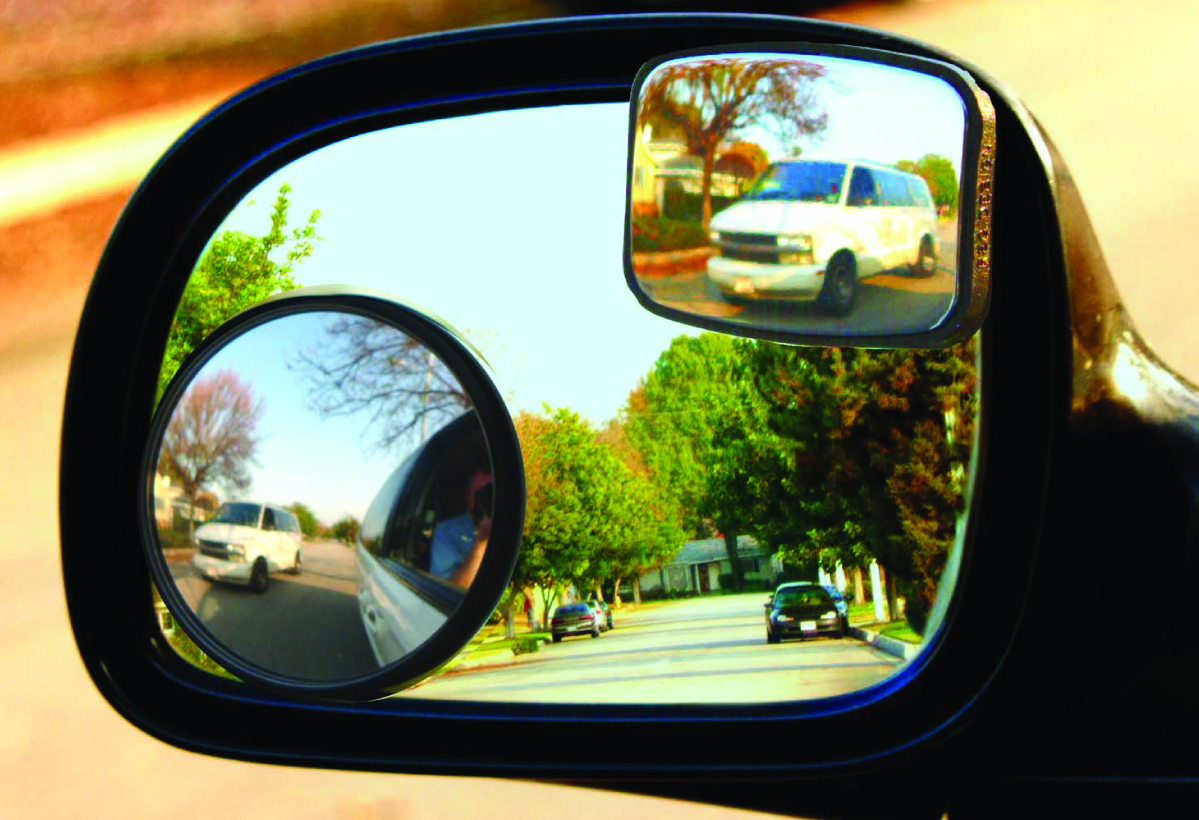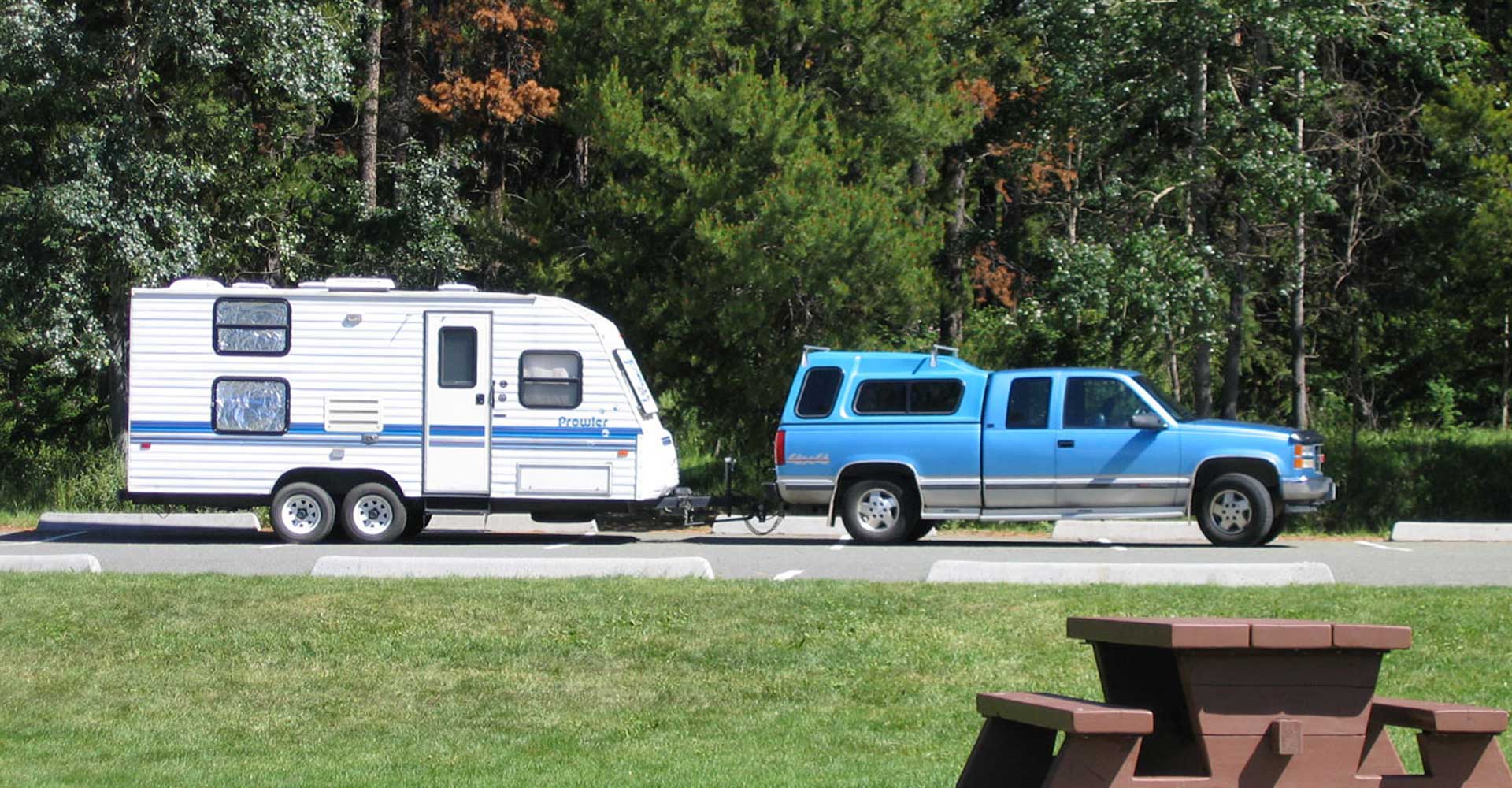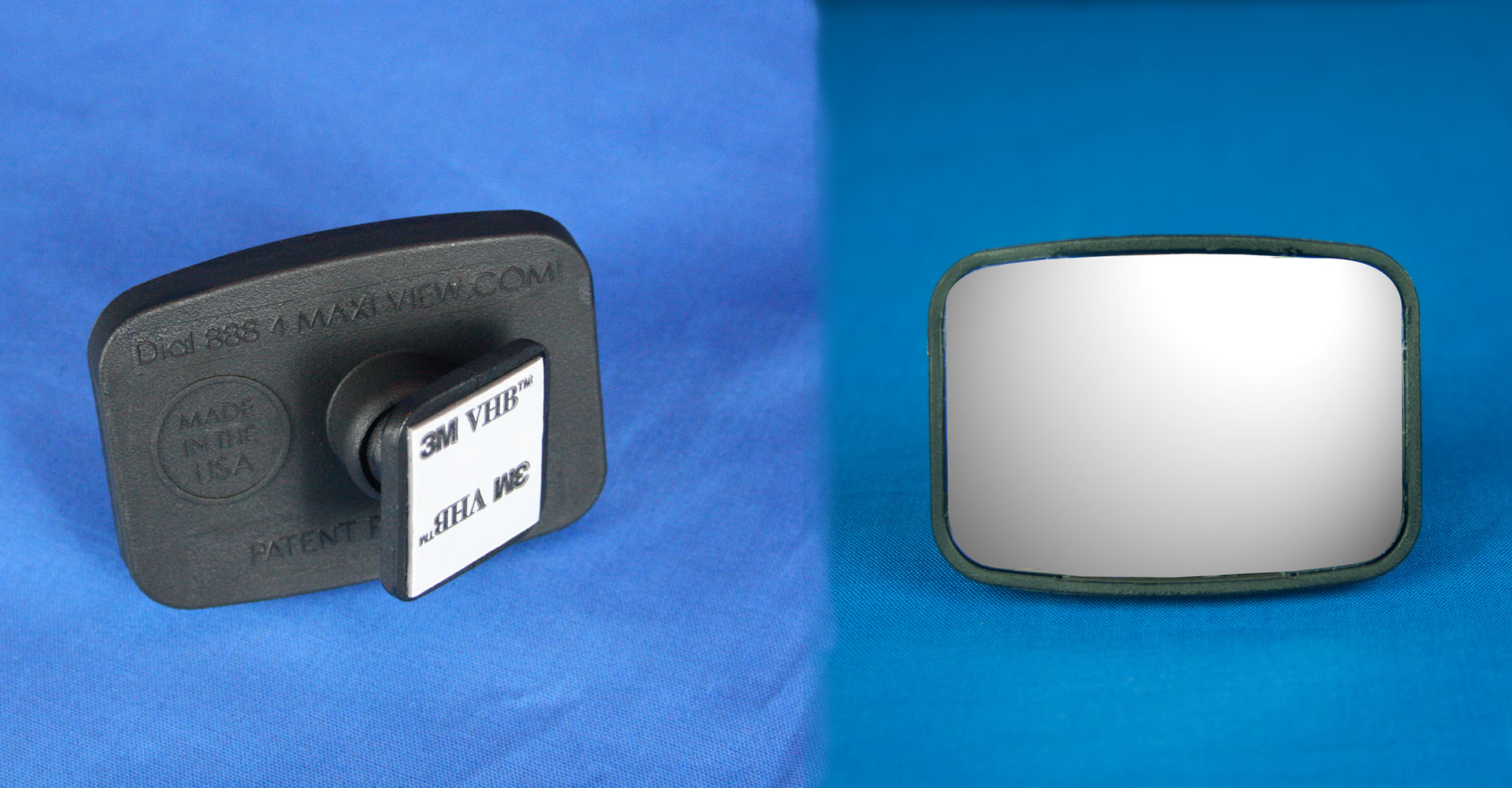
Blind spot mirrors attempt to address a real problem for motorists, especially those with long and wide vehicles such as motor homes. They are an essential tool in the search for safety on the road.
All vehicles have blind spots to the rear quarter. Those on a motor home are longer and reach further out to the side. They will also have a blind spot to the rear, usually viewed in a car through the rear view mirror.
The side mirrors can only show part of the picture and it is a foolish driver who forgets that when they look in those mirrors, they may be missing something. The blind spot in a motor home could easily hide several cars or a truck.
Blind spot mirrors mostly work by giving a second angle of vision. They point in a different direction and show a different area to the usual side mirrors. Some have different shaped lenses so that they take in a broader area than the normal mirrors.
They are usually fixed to the existing mirrors and on extended or extendable brackets of some sort. This allows for extra vision to the rear of the vehicle as well as down both sides.
Some blind spot mirrors are in addition to the existing mirrors whilst some replace them altogether.
Try out the various sorts in various configurations. For example there is a theory that the larger nearside blind spot needs a convex mirror to help, whilst the smaller spot on the off side is best addressed by a flat mirror.
They should be adjusted to give the greatest benefit by reducing the blind spot the most. They should also be used in practice by the driver to avoid confusion on the road as to what is being seen in which mirror.

